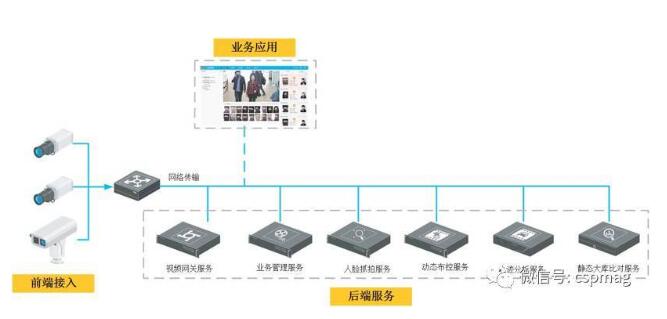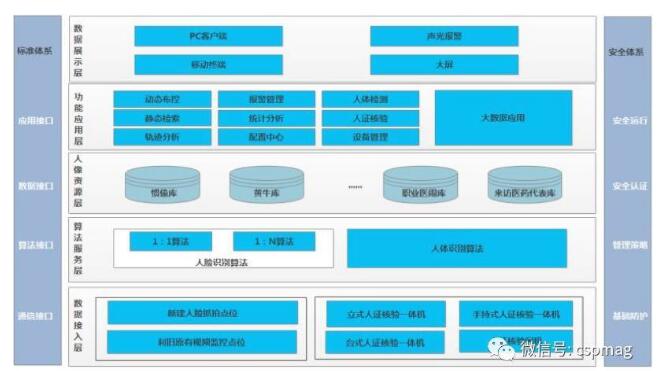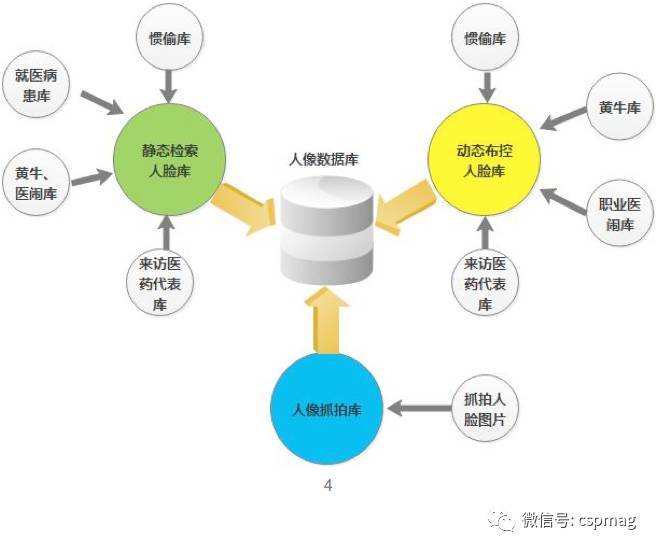Security level to understand the application of face recognition in the medical industry
With the rapid progress of face recognition technology and the highlight of market application requirements and the rush of capital, face recognition has been particularly hot in the past year or two. Face recognition technology has also made great breakthroughs in application. It is no longer limited to simple applications in attendance and access control industries. Currently, with the further maturity of technology and the improvement of social recognition, it is widely used in finance, justice, *, border inspection, government, aerospace, power, factories, medical and many other enterprises and institutions. This article will focus on the application of face recognition in the medical industry from the perspective of security.
The pain point of the medical industry in safety management
In recent years, there are two major contradictions in the medical industry. The first is the contradiction between doctors and patients. In recent years, the contradictions between doctors and patients have been continuously escalated, and disputes among doctors and patients have emerged one after another. In this case, professional “doctors†are created. These professional “doctors†take mourning halls in hospitals, fight for property, and set up barriers to stop patients from seeking medical treatment, or beat medical staff, follow medical staffs, and visit clinics and doctors’ offices. The methods of detention in the leadership office, etc., exert pressure on the hospital in the form of severely impeding medical order, expanding the situation, and causing negative impact on the hospital. A wide range of contradictions and frequent medical emergencies seriously threaten the personal safety of medical personnel and patients.
The second is the contradiction between medicines, the price confusion in the pharmaceutical industry, the relative lack of credibility of the hospital, and the breeding of a small number of job crimes.
In the face of these problems, relevant management departments have attached great importance to the introduction of various policies and measures in recent years to accelerate the safety precautions in the medical industry, especially hospitals. Judging from the programmatic documents of the management department and the contradictions of the medical industry, it is necessary to develop artificial intelligence in the medical industry and promote the development of the industry through the artificial intelligence technology such as face recognition, maintain the medical order, and ensure the safety of the people and property of the people. . However, due to the support of national policies, the development and application of artificial intelligence technologies such as face recognition in the medical industry continues to accelerate.
Artificial intelligence in the medical industry
In recent years, the informationization of hospitals around the world has been accelerating, and in the construction of informationization of hospitals, the construction of hospital safety precautions is also of the greatest concern of the hospital, and personnel safety precautions and management in public areas and functional areas within the hospital are given. The hospital has brought great challenges.
At the same time as new hospitals are being built and transformed, the coverage and strength of the hospital's own built security system is gradually accelerating, and it has entered the era of high-definition and digitalization. However, by artificially monitoring, searching, and searching for relevant information of target personnel, human attention, observation, and subjective judgments will affect the omission. How to achieve intelligent, efficient, and rapid personnel information collection, capture and processing, to curb fraudulent use of crimes, eliminate the registration of cattle, reduce the occurrence of medical emergencies and prevent crimes are crimes that the current hospital urgently needs to solve. Therefore, it is imperative to strengthen the innovation of personnel management related concepts and processing technologies, extract various types of personnel information resources contained in massive video resources, and combine relevant internal business information in hospitals to build specialized artificial intelligence information processing systems. Safeguard the public security order within the hospital and improve the medical service capabilities. Although the development of artificial intelligence in China has only just begun, it has brought tremendous changes to the medical industry. The main performances are:
Ø Artificial intelligence products combined with robot technology bring new technologies to patients' rehabilitation;
Ø Combine the artificial intelligence management process, change the traditional medical treatment mode, and release the superior medical resources;
Ø Artificial intelligence technology based on deep learning brings a huge amount of effective data accumulation to the medical industry, which can solve the problem of long-term data inefficiency in the medical health market.
Ø Artificial intelligence technology based on deep learning makes medical research deeper and more comprehensive;
Face recognition applications in the medical industry
The face recognition system has been applied to the public safety field on a large scale and has been extended to the medical industry. The applications that can be carried out are embodied in many aspects. Combined with the application requirements and business characteristics of the medical industry, we have introduced a corresponding solution.
1. Key applications
(1) Combat medical-related crimes and ensure the safety of visits. Set up a targeted organization for the control of criminals involved in medical treatment and cooperate with the local* department to conduct real-time deployment.
(2) Control and control of job crimes and control unfair competition. Manage and control the medical representatives who enter the hospital's treatment area to help solve problems such as non-standard operation and disordered competition in the pharmaceutical circulation field.
(3) Prevent professional occupation and protect personal safety. Crack down on frequent professional occupations and improve the response speed of events, from passive responses to active prevention.
(4) Standardize the treatment process and harmonize the doctor-patient relationship. Focus on preventing special groups such as cattle and medical care providers from interfering with the normal treatment order.
(5) Strengthen supervision and maintain medical insurance funds. Realize the comparison of identity cards in the patient information of the patient and the medical insurance information database to eliminate the phenomenon of fraudulent use of health insurance card.
(6) Easy to take care of people with severe mental disorders. In combination with the “Snow Liang Projectâ€, it is ensured that patients with severe mental disorders flow into and out of the area and find control.
2. System topology

Front-end access terminal: It mainly implements access to video streams in various areas and environments of hospitals, including important places such as gates, clinics, and channels, as well as various types of historical video information or pictures, and is a face recognition processing system. Provide data source support.
Network transmission: It mainly realizes data transmission and communication of various types of video information.
Back-end processing services: Includes server terminal equipment, databases, and service software for calculation, analysis, and storage. The database includes the dispatcher information base, the static search personnel information base, the history pass-through personnel log information base, and the system basic information. Through the back-end processing system, the integrated video information analysis, face information collection, feature extraction, and personnel comparison alarm processing applications are realized.
Business application system: It is mainly based on various services provided by the back-end to meet the application requirements of face recognition.
3. Logical architecture

As shown in the above figure, the entire platform relies on the security system and standard system for top-level design. The overall architecture is divided into five layers (from bottom to top): data access layer, algorithm service layer, portrait resource layer, functional application layer, and data presentation layer. . The types of data resources involved in the platform and various application systems can integrate various resources, algorithms, and applications related to face recognition, enabling flexible and comprehensive data access, data analysis, and data display.
4. Face business library
Face recognition system business applications include three types of face database: dynamic deployment control library, static search library, face log library. As shown below:

Dynamic deployment control library: Dynamic deployment and control library associated with real-time deployment of control tasks, also known as "blacklist library." The library contains face images of various types of “key personnelâ€, personal identification information, and structured face feature data. The main application scenario is real-time face matching and alarming at various deployment locations.
Static search library: The static search library includes large-scale face images, person identity information, and structured face feature data, such as clinics, inpatient patient information databases, habitual database, cattle, professional medical library, and visiting medical representatives database. After the import, the main application scenario is image search comparison and identity information query to determine the identity of the person.
Face log library: The face log library includes information such as live panoramic pictures, face pictures, and structured face feature data, snap shot locations, and snap shot times captured during dynamic deployment. The main business application scenario is to perform face image retrieval, query target personnel presence and time, locate personnel, and perform trajectory analysis based on GIS maps.
Face recognition breakthrough in the medical industry
The application breakthrough of face recognition in the medical industry is based on three points:
1. Obtaining information on the target: Because the administrative system is different, there is a great difficulty for the medical industry to obtain information on the target, and the relevant administrative units are required to perform key coordination work. Target audience information includes, but is not limited to, face photos, portrait photos, basic personnel information, and staff dynamics.
2. The face recognition algorithm is further improved: The accuracy of the current face recognition algorithm has reached a very high level, false positives and false negatives have been controlled in an acceptable range; a more recent algorithm can be unstructured Get more value information in videos/pictures to implement different applications from more dimensions.
3. Improvement of managerial thinking and level: Artificial intelligence and face recognition are revolutionary disruptive technologies that can bring tremendous improvements to the medical industry. How to apply face recognition to all parties in the healthcare industry requires managers and technology providers to expand their thinking and work together.
Face recognition in the medical industry
Face recognition is highly scalable. Afterwards, through open interfaces and docking with corresponding systems, various functions such as face-to-face access control, face verification, and medical and police linkage can be implemented to meet the follow-up information application requirements of the hospital.
Docking * video surveillance, medical and police linkage platform: the system meets the existing standards, and can be seamlessly connected with the * video surveillance, medical and police linkage platforms, etc., and the alarm information and associated videos and pictures will be pushed to the police station in the area. Realize linkage.
Face identity verification: Enter the target person's photo, you can know the person's identity and whether it belongs to the key management personnel, has ever been to the hospital, and its emergence time and frequency. Can be used to screen suspicious individuals and find their activity patterns.
Personnel trajectory playback: enter the target person's photo, you can check whether this person has been to the hospital, where to visit. This function can restore the trajectory of a particular person for the suspect's behavior and post-mortem evidence.
Docking access control system: docking with the access control system, allowing advanced functions such as brushing the face to open the door, face attendance, etc., to facilitate access control in the office area, operating room, drug library, inpatient department and other areas.
Docking and swiping system: docking with the second-generation card, medical insurance card and other card-swiping systems, comparing the captured face photos with the photos stored on the certificates, and verifying the real identity of the card-wiring person.
From the macro level, face recognition improves the security system, achieves accurate positioning, advances early warning, and collects evidence afterwards, changes management processes, and improves management. With the development of product technology, it is believed that the face recognition system will be widely applied to the planning, business, management and other aspects of the medical industry.
The Application and Prospect of the Original Title Face Recognition System in the Medical Industry
Wool Carding Machine,Carding In Textile,Cotton Carding Machine,Rieter Carding Machine
Changshu Tianli Nonwoven Equipment Co., Ltd. , https://www.tianli-machinery.com